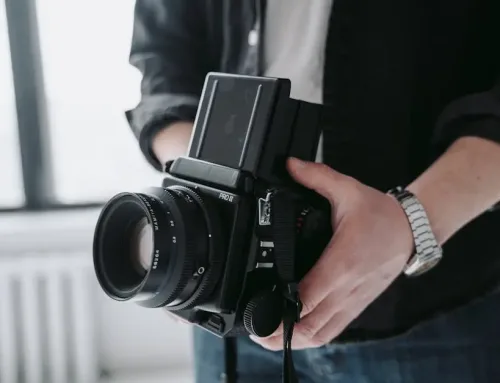In today’s visually driven world, your headshot holds more significance than ever before. It serves as a vital first impression, encapsulating your professional persona and inviting engagement in an online environment. As technology and social norms have evolved, so too have the styles and approaches to headshots. This blog delves into the journey of modern headshots, exploring their transformations, cultural impact, and the best practices for achieving a standout image in the digital age.
The Role of Headshots in the Digital Landscape
In the digital landscape, headshots serve as the gateway to professional interactions. They are not just images; they convey confidence, professionalism, and approachability all in a single glance. Whether on a professional networking site, a corporate web page, or a social media profile, a well-crafted headshot can leave a lasting impression. As individuals navigate a crowded online space, an eye-catching and relatable headshot becomes crucial.
Moreover, as remote work becomes common, the requirement for a strong online presence escalates. Your headshot can significantly influence how potential employers and clients perceive you. A professional image can create a sense of trust and reliability, integral in virtual interactions, where non-verbal cues are often absent.
As technology continues to evolve, so do the platforms and the expectations surrounding headshot photography. This evolution emphasizes not just the visual aspects but also the importance of authenticity and representation in capturing one’s character.
A Brief History: From Corporate to Casual
The history of headshots traces back several decades, primarily tied to formal corporate cultures. In earlier times, headshots were standardized, almost rigid, as they aimed to project authority and professionalism. Business attire, stiff poses, and neutral backgrounds dominated this era, establishing a formula that many professionals followed. Gradually, as society began embracing a more casual approach, the visuals began to shift as well.
This transition has marked a pivotal change, moving from staid images to portraits that exhibit personality. Headshots became more vibrant, incorporating elements that reflect individual style and personal branding. Today, people often prefer brighter colors, engaging backgrounds, and poses that exude warmth and relatability.
It’s fascinating to observe how the landscape of headshots evolved in tandem with cultural shifts. The rise of startups and entrepreneurial ventures fostered an environment valuing authenticity over formality. We now see professionals crafting unique headshots that tell their stories rather than merely adhering to traditional norms.
The Rise of Social Media and Its Impact on Headshots
Social media has undoubtedly transformed the way we view and select headshots. Unlike the past, where headshots adhered strictly to corporate standards, platforms like Instagram and LinkedIn have expanded the visualization parameters. Users are encouraged to showcase their personalities and professional skills through engaging imagery that resonates with their audience.
The casual nature of social media empowers individuals to portray themselves in a more relatable manner. One can now spot headshots featuring candid smiles, outdoor settings, or even fun backdrops that reflect hobbies and interests. This trend marks a stark departure from the traditional stiff and serious portrayals of yesteryear.
It not only makes headshots more appealing but also reinforces the significance of personal branding. The expectation is that one’s online image should align with their values and aspirations, making it crucial to curate an authentic representation tailored for the digital audience.
Elements of an Effective Modern Headshot
Crafting an effective modern headshot entails a blend of several strategic elements. First and foremost, clarity is essential. A high-resolution image that showcases facial features clearly is paramount, as it serves as the primary focal point of the headshot. It’s advisable to ensure good lighting that emphasizes the subject’s face, allowing them to stand out in any digital setting.
Moreover, the background can significantly impact the overall impression of the headshot. Neutral or subtly blurred backgrounds tend to work well, maintaining the emphasis on the person without distraction. However, more vibrant backgrounds can be utilized, reflecting personal interests, ultimately creating a deeper connection with the viewer.
Equally important is the expression. A warm, inviting smile or a confident expression can help convey openness and professionalism simultaneously. Based on the desired audience, one can switch from a more formal pose to a relaxed posture that feels genuine yet professional.
Trends to Watch: What’s Next in Headshot Photography?
As we look to the future, the realm of headshot photography is embracing upcoming trends that will redefine visual representations. One significant trend is increased incorporation of digital technology such as AI and AR, allowing for hyper-personalized images that cater specifically to individual branding needs. This evolution will likely give rise to unique styles—where headshots can dynamically adapt based on the platform they are used on.
Another trend gaining traction is the use of video headshots. Professionals are experimenting with brief video introductions, allowing them to communicate their personalities and expertise far beyond the static image capabilities. This format can enrich the online presence and give a more nuanced representation of who they are.
Lastly, movement toward inclusivity and diversity in headshots reflects society’s growing emphasis on representation. We can expect more focus on showcasing varied cultures and identities in headshot photography, allowing for a richer tapestry of professional imagery that resonates with broader audience demographics.
Looking Ahead: The Future of Headshots
The evolution of modern headshots reflects broader changes in society and technology, emphasizing the importance of personal branding. As we move further into the digital age, headshots will continue to adapt, catering to new platforms and audience expectations. Understanding these shifts allows individuals to stay relevant and impactful in their professional representation. So, whether you’re updating a LinkedIn profile or crafting a personal brand, remembering the history and trends of headshots can help you present yourself in the best light.







